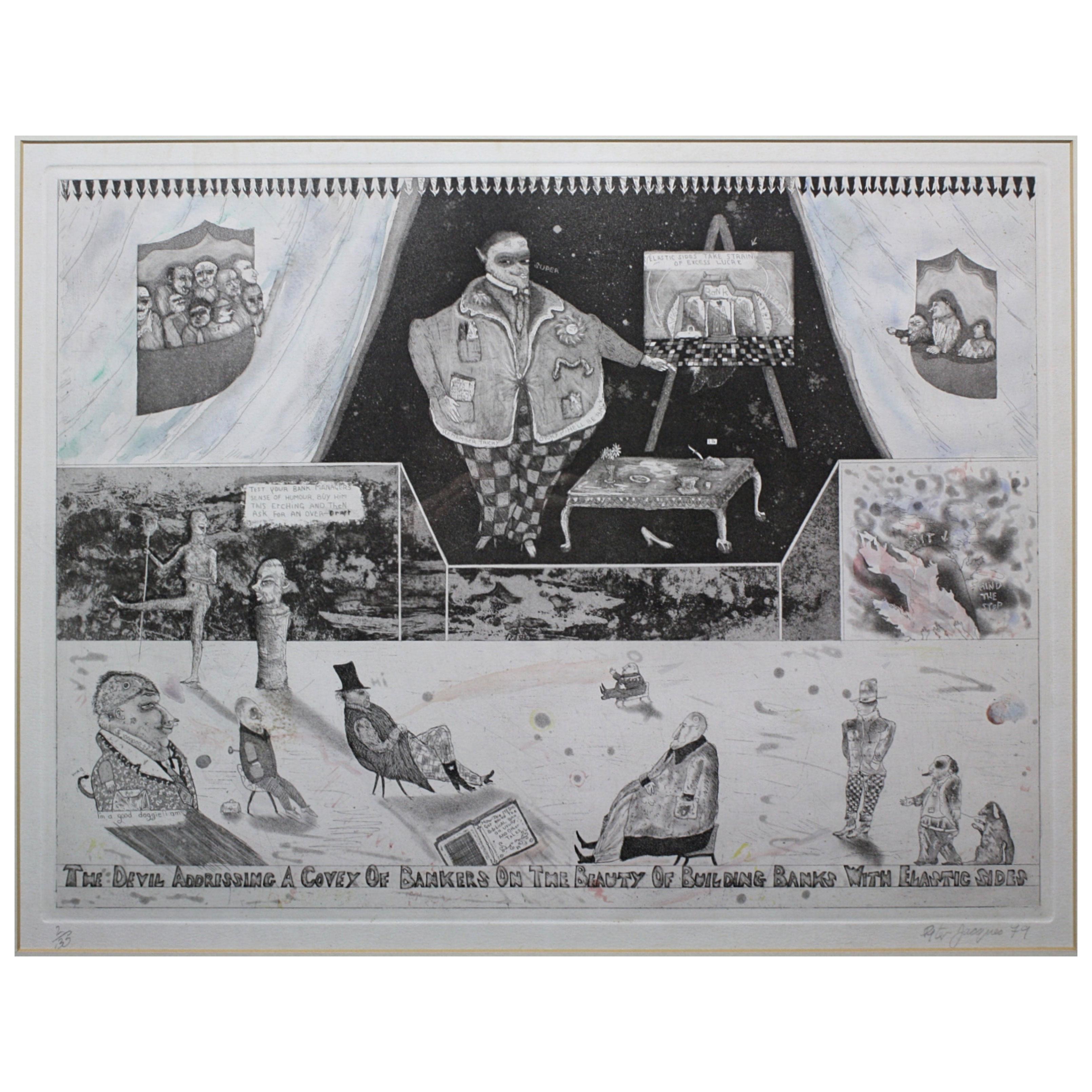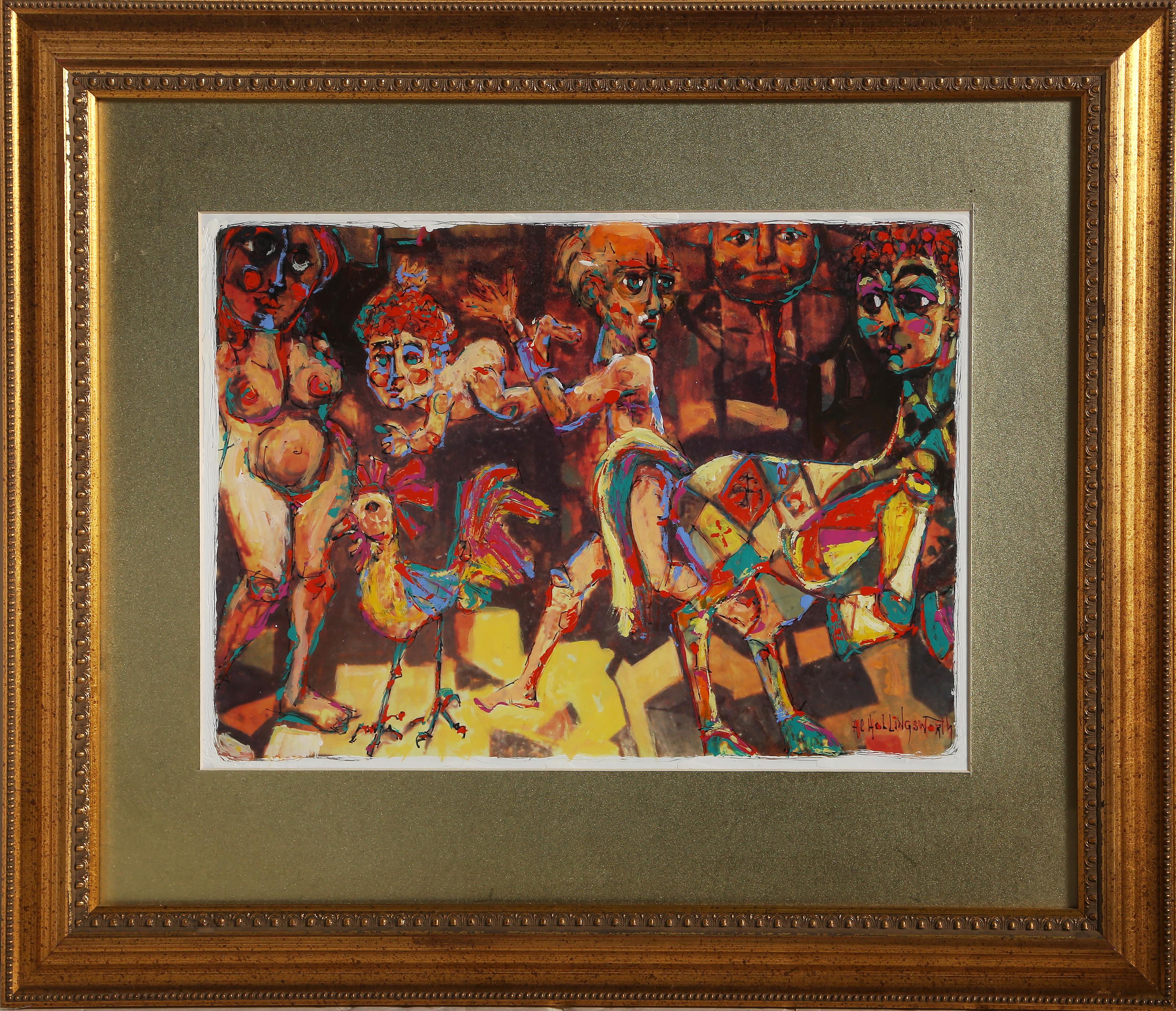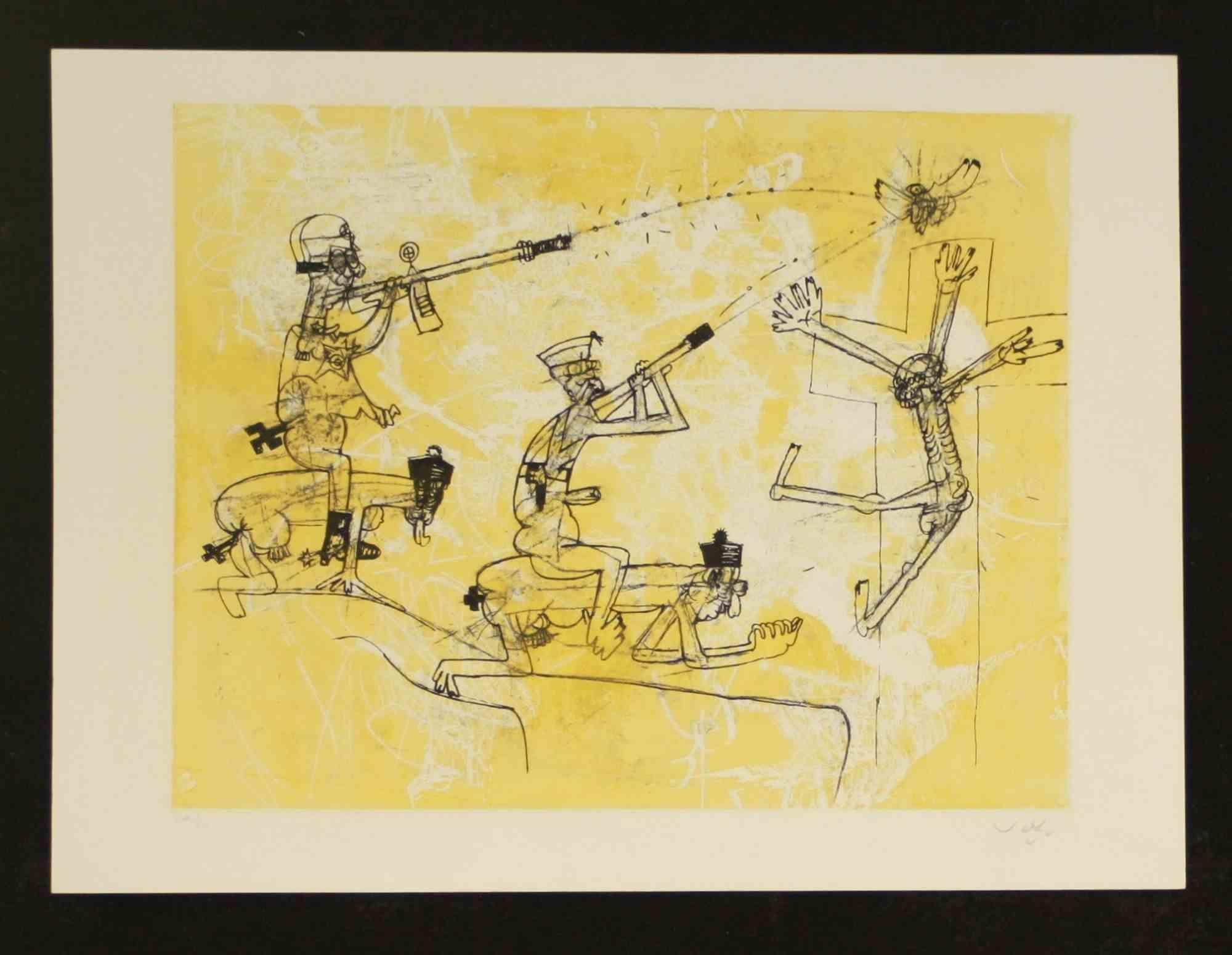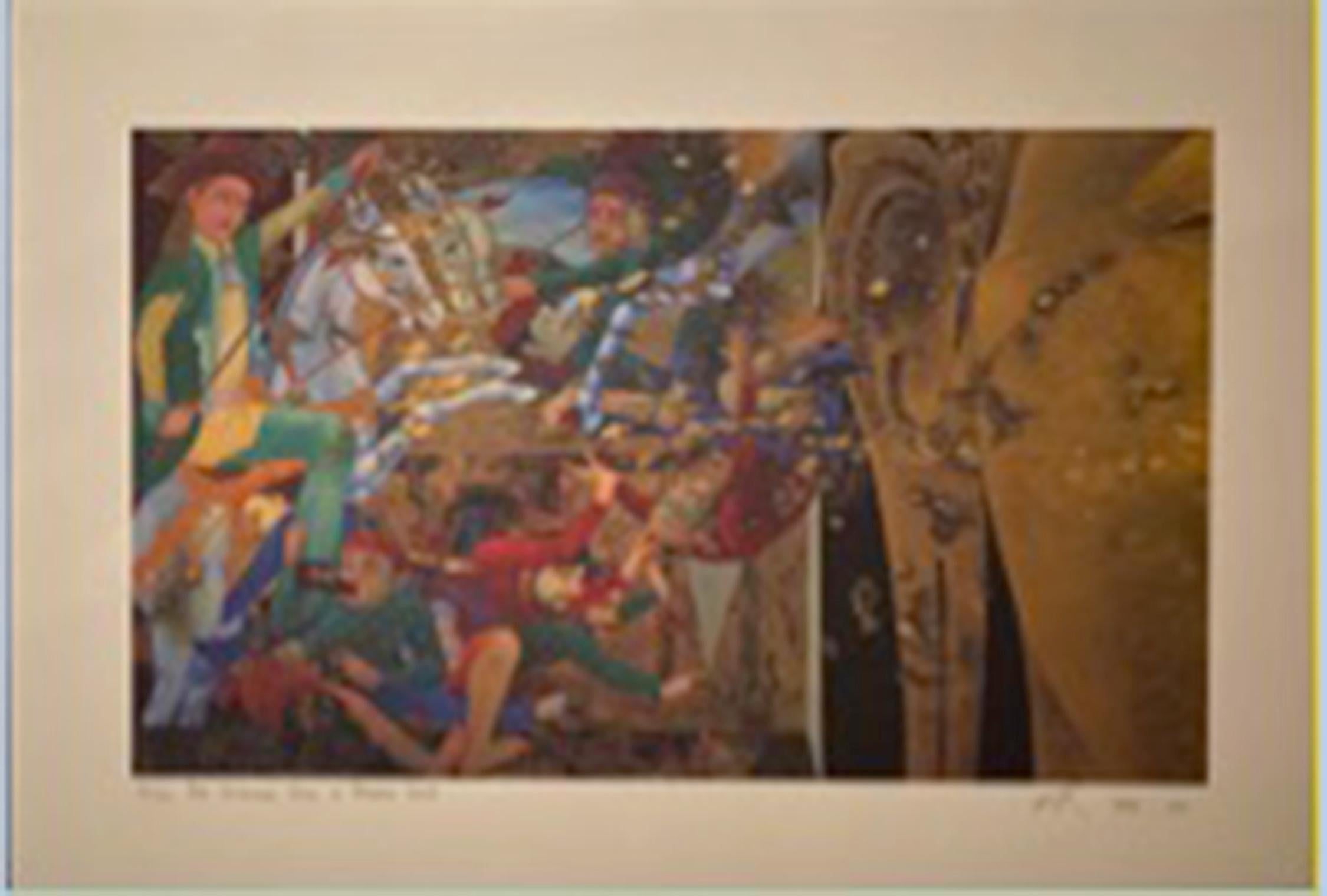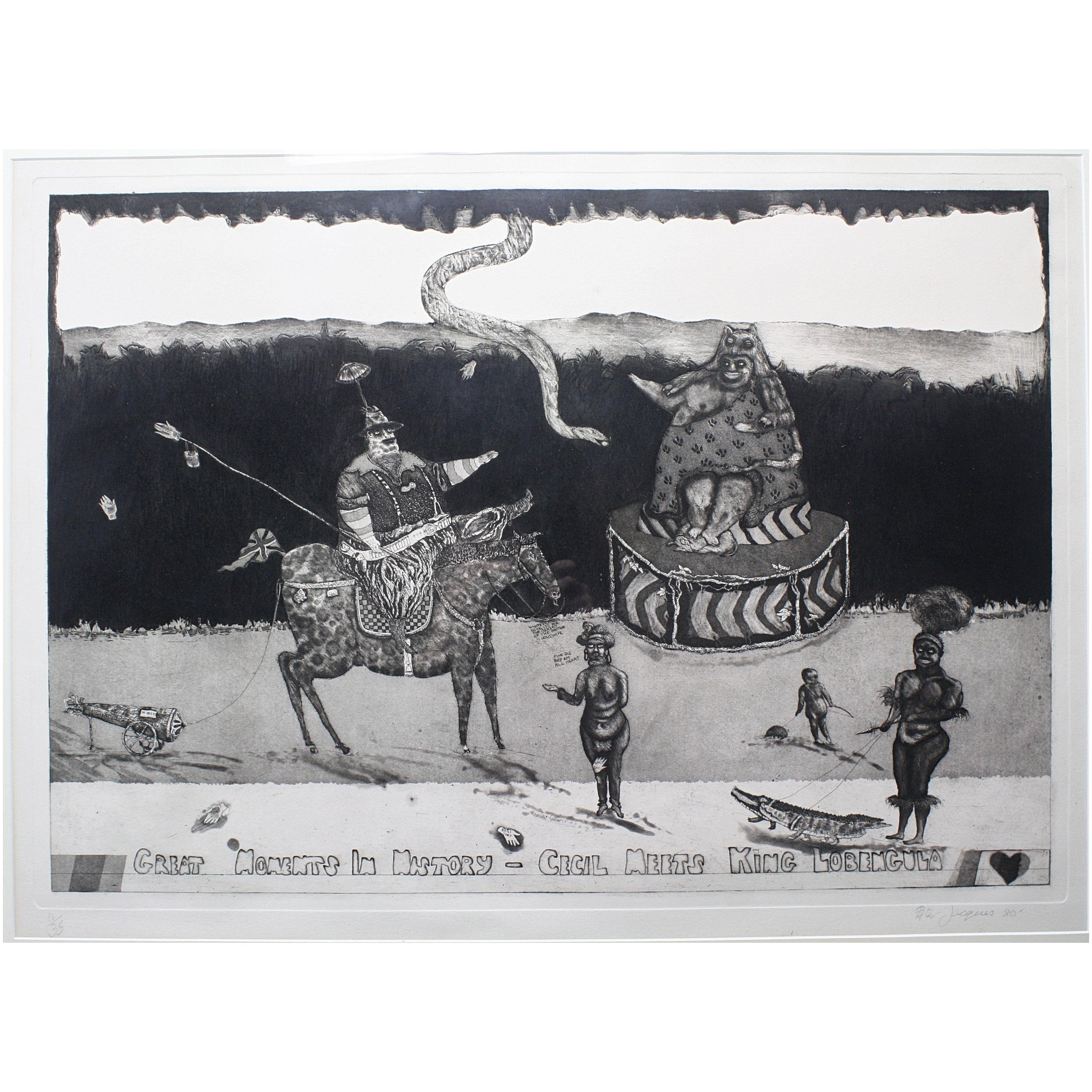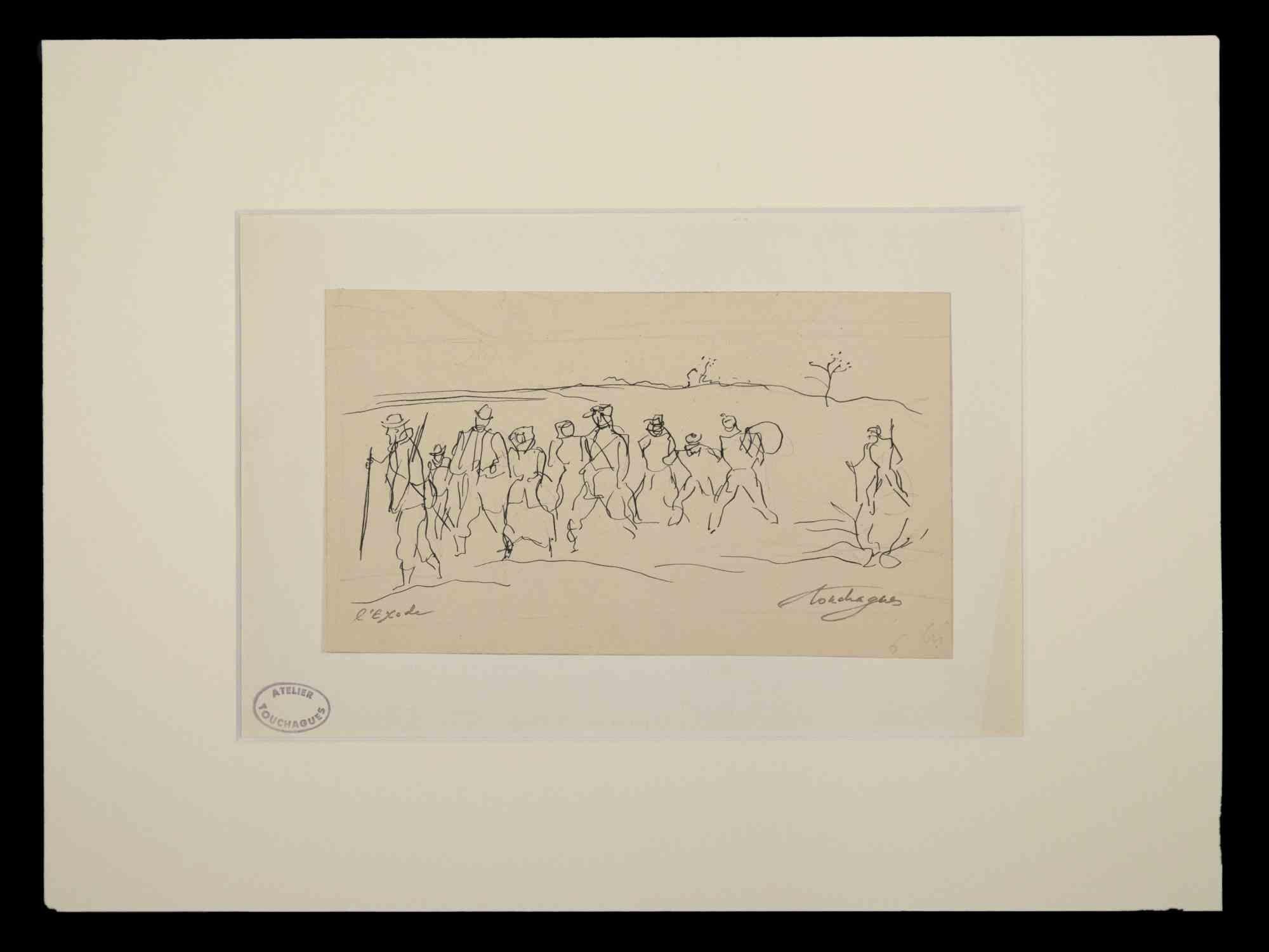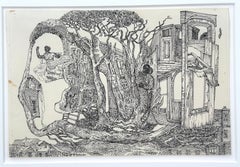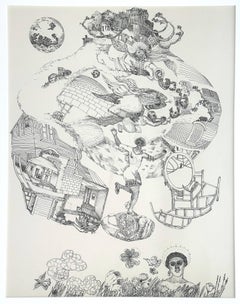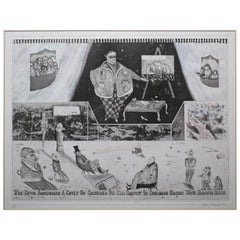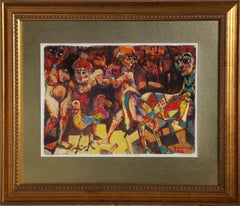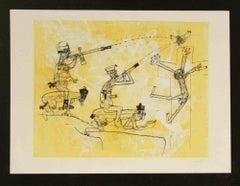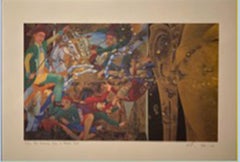Items Similar to Indian Without Reservations
Want more images or videos?
Request additional images or videos from the seller
1 of 15
Chris OrrIndian Without Reservations1968
1968
$800
£620.42
€705.82
CA$1,144.69
A$1,250.67
CHF 657.78
MX$15,036.18
NOK 8,281.97
SEK 7,775.67
DKK 5,270.47
About the Item
Chris Orr (British, b. 1943)
Indian Without Reservations, 1968.
Artist's proof etching, composed of four scenes. Edition of 30 with 5 Artist's proof, of which this is #2.
Signed and numbered lower left. Measures: Visual image 24"H x 29"W; Framed 33.5"H x 37.5"W.
Chris Orr studied at Ravensbourne College of Art from 1959 to 1963, Hornsey College of Art from 1963 to 1964 and the Royal College of Art, London from 1964 to 1967.
He went on to teach part-time at Cardiff College of Art, Central St Martins, London and at the Royal College of Art, London. He was Professor of Printmaking at the Royal College of Art from 1998 to 2008, and is now a Professor Emeritus.
Chris Orr has had many solo shows in the UK, including the Serpentine Gallery, London, 1971, the Whitechapel Gallery, London and the Museum of Modern Art, Oxford, 1976. International solo shows include Galleria Grafica, Tokyo, Japan, in 1980, Jay Street Gallery, New York, USA, in 1983 and Print Guild, Melbourne, Australia in 1987. He has exhibited regularly at the Jill George Gallery since 1978.
Orr was made a fellow of the Royal College of Art in 1985, a Fellow of the Royal Society of Painter Printmakers in 1988 and a Royal Academician in 1995. He received an MBE for services to the Arts in 2008. In 2013 the Royal Academy published Chris Orr: the Making of Things, about his life and work. Orr lives and works in London.
- Creator:Chris Orr (1943, British)
- Creation Year:1968
- Dimensions:Height: 33.5 in (85.09 cm)Width: 37.5 in (95.25 cm)Depth: 1.25 in (3.18 cm)
- Medium:
- Movement & Style:
- Period:
- Condition:
- Gallery Location:Wilton Manors, FL
- Reference Number:1stDibs: LU245214353642
About the Seller
4.9
Platinum Seller
Premium sellers with a 4.7+ rating and 24-hour response times
Established in 2007
1stDibs seller since 2015
432 sales on 1stDibs
Typical response time: 5 hours
- ShippingRetrieving quote...Shipping from: Wilton Manors, FL
- Return Policy
Authenticity Guarantee
In the unlikely event there’s an issue with an item’s authenticity, contact us within 1 year for a full refund. DetailsMoney-Back Guarantee
If your item is not as described, is damaged in transit, or does not arrive, contact us within 7 days for a full refund. Details24-Hour Cancellation
You have a 24-hour grace period in which to reconsider your purchase, with no questions asked.Vetted Professional Sellers
Our world-class sellers must adhere to strict standards for service and quality, maintaining the integrity of our listings.Price-Match Guarantee
If you find that a seller listed the same item for a lower price elsewhere, we’ll match it.Trusted Global Delivery
Our best-in-class carrier network provides specialized shipping options worldwide, including custom delivery.More From This Seller
View AllHomecoming (Black Surrealist Philadelphia artist)
By Roland Ayers
Located in Wilton Manors, FL
Roland Ayers (1932-2014).
Homecoming, 1971.
Ink on paper, 4 1/8 × 6 7/8 inches.
Signed and dated.
Small toning stain left margin.
Artist and art educator, Roland Ayers was ...
Category
1970s Surrealist Abstract Drawings and Watercolors
Materials
Paper, Ink
The Grasses (Surrealist Black Philadelphia Artist)
By Roland Ayers
Located in Wilton Manors, FL
Roland Ayers (1932-2014).
The Grasses: Vision of the Voodoo Child, ca. 1970
Ink on paper, 17 × 22. Measuring 22 × 28 inches in matting.
Artist initials lower left. Original artis...
Category
1970s Surrealist Abstract Drawings and Watercolors
Materials
Paper, Ink
Ancestor Worship (Black Surrealist Philadelphia artist)
By Roland Ayers
Located in Wilton Manors, FL
Roland Ayers (1932-2014).
Ancestor Worship, 1971.
Pen and ink drawing.
4 w. x 6 h. inches,
Signed and dated lower right.
Artist and art educator, Roland Ayers was born on Jul...
Category
1970s Surrealist Abstract Drawings and Watercolors
Materials
Paper, Ink
Pyramid Mysteries (Black Surrealist Philadelphia artist)
By Roland Ayers
Located in Wilton Manors, FL
Roland Ayers (1932-2014).
Pyramid Mysteries, 1970.
Ink on illustration board, 13.5 × 9.75 inches.
Signed and dated. Titled on verso.
Artist and art educator, Roland Ayers was ...
Category
1970s Surrealist Abstract Drawings and Watercolors
Materials
Paper, Ink
Ancestor Worship II (Black Surrealist Philadelphia artist)
By Roland Ayers
Located in Wilton Manors, FL
Roland Ayers (1932-2014).
Ancestor Worship II, 1971
Ink on paper, 4 × 5.5 inches.
Signed and dated.
Artist and art educator, Roland Ayers was born on July 2, 1932, the only c...
Category
1970s Surrealist Abstract Drawings and Watercolors
Materials
Paper, Ink
Land's End (Black Surrealist Philadelphia artist)
By Roland Ayers
Located in Wilton Manors, FL
Roland Ayers (1932-2014).
Land’s End, 1971
Ink on paper, 3.25 × 5 inches
Signed and dated.
Artist and art educator, Roland Ayers was born on July 2, 1932, the only child of Ali...
Category
1970s Surrealist Abstract Drawings and Watercolors
Materials
Paper, Ink
You May Also Like
Satirical Lithograph by Peter Jacques "the Devil" London Artist Royal Academy
By Peter Jacques
Located in Lowestoft, GB
A fine ink and hand tinted etching by Peter Jacques
Little is known about Peter, he was a printmaker, working in etching and watercolour, who studied ...
Category
Vintage 1970s English Contemporary Art
Materials
Paper
Equis Allegory, Surrealist Hand-Colored Lithograph by Alvin Carl Hollingsworth
By Alvin C. Hollingsworth
Located in Long Island City, NY
Alvin Carl Hollingsworth, American (1928 - 2000) - Equis Allegory, Year: circa 1960, Medium: Hand painted Lithograph on paper, signed in the plate lower right, Size: 11 x 15.5 in....
Category
1960s Surrealist Figurative Prints
Materials
Lithograph
Untitled - Etching by Sebastian Matta - 1980
By Sebastian Matta
Located in Roma, IT
Etching/Aquatint made on zinc plate on Magnani-Pescia paper 310 gr/m², paper size 60 cm x 45 cm, work size 48cm x38 cm.
Excellent condition, no defects.
Work number 49/50; Authenti...
Category
1980s Surrealist Figurative Prints
Materials
Etching
"Economic Crisis in Dhaimha Land, " Signed Lithograph on Handmade Paper
By Panya Vijinthanasarn
Located in Houston, TX
Artwork Details:
Panya Vijinthanasarn
"Economic Crisis in Dhaimha Land"
1999
Signed Lithograph on Handmade Paper
Edition 1/300
17 x 28 Inches
Category
1990s Figurative Prints
Materials
Lithograph
Satirical Lithograph by Peter Jacques "Lobengula" London Artist Royal Academy
By Peter Jacques
Located in Lowestoft, GB
A fine ink and hand tinted etching by Peter Jacques
Little is known about Peter, he was a printmaker, working in etching and watercolour, who studied...
Category
Vintage 1980s English Contemporary Art
Materials
Paper
Exode - Original Drawing by Louis Touchages- Mid 20th Century
Located in Roma, IT
Exode is an original drawing in China Ink Drawing realized in the mid-20th Century by Louis Touchages (1893-1974).
Good Conditions.
The artwork is depicted through soft strokes in ...
Category
Mid-20th Century Modern Figurative Drawings and Watercolors
Materials
Ink
More Ways To Browse
Pierre Yves Riveau
Piranesi Architectural Etchings
Piranesi Views Of Rome
Prayer At Valley Forge
Richard Yarde
Robert Elliot
Robert Gibbings
Romare Bearden Poster
Ronald King
Roy Lichtenstein Reflections
Rufino Tamayo Signed
Russian Woodcut
Saint Genie
Salvador Dali Green
Salvador Dali Signed Prints Bullfight
Secession Poster Vienna
Shepard Fairey Large
Signed Charles Bragg
